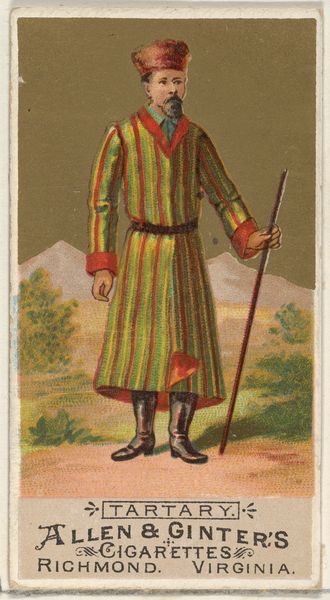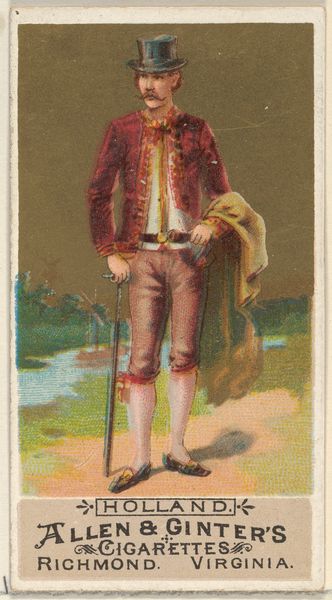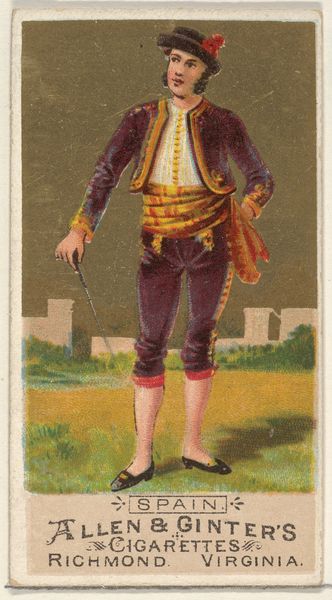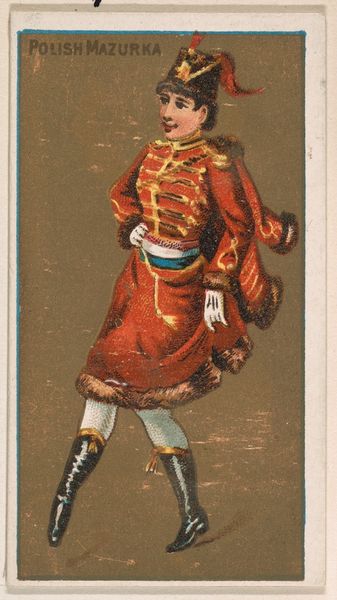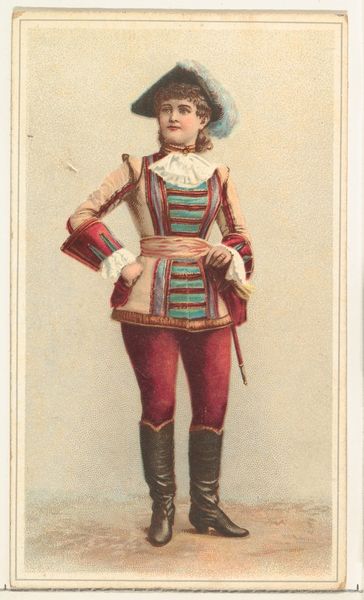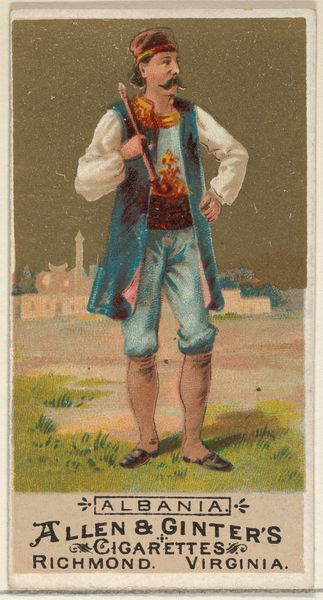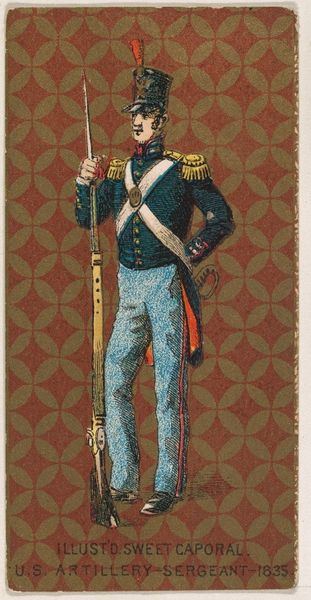
Siam, from the Natives in Costume series (N16), Teofani Issue, for Allen & Ginter Cigarettes Brands 1886 - 1900
0:00
0:00
drawing, print, watercolor
#
portrait
#
drawing
# print
#
caricature
#
watercolor
#
orientalism
#
watercolour illustration
#
portrait art
Dimensions: Sheet: 2 3/4 x 1 1/2 in. (7 x 3.8 cm)
Copyright: Public Domain
Editor: Here we have “Siam, from the Natives in Costume series,” printed between 1886 and 1900 by Allen & Ginter. It’s a drawing and watercolor print featured on a cigarette card. I find it quite stylized; what's your take? Curator: The card's materiality itself speaks volumes. These cards were mass-produced, using relatively cheap materials like cardstock and simple printing techniques, reflecting industrial production processes. What does the subject matter – a supposed “native” of Siam – tell us about the consumer culture of the time? Editor: Well, it seems like this image played into the exoticism that was popular then. Was it purely for entertainment or were there other motives? Curator: Exactly. The Orientalist style is important, reducing complex cultures to simplistic, often inaccurate visual shorthand for commercial purposes. How does that relate to labor practices and commodity production? The labor involved in growing the tobacco, manufacturing the cigarettes, and even printing these cards should also be considered, all part of a global economic network. Editor: That's interesting. So, you're saying the image is only one piece of the puzzle; that we need to consider everything involved in the cigarette's production? Curator: Precisely. Examining the manufacturing and global distribution of something as small as a cigarette card opens a lens onto the relationship between labor, commodity culture, and the exoticization of other cultures. It wasn't just “entertainment.” It’s part of a larger system. Editor: I never really considered all that went into something like this. It's given me a totally different way to approach understanding artworks. Curator: And that’s precisely what understanding the materials, manufacturing process, and social context enables us to do; art exists within a system.
Comments
No comments
Be the first to comment and join the conversation on the ultimate creative platform.




